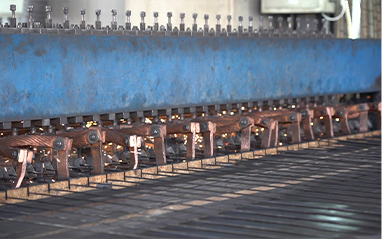Grain Feed Mixer Enhancements for Optimal Livestock Nutrition and Efficiency
Nov . 24, 2024 19:01 Back to list
Grain Feed Mixer Enhancements for Optimal Livestock Nutrition and Efficiency
The Importance of Grain Feed Mixers in Modern Agriculture
In the ever-evolving landscape of agriculture, maintaining livestock health and optimizing feed efficiency have become paramount concerns for farmers and ranchers. One crucial tool that has emerged to address these challenges is the grain feed mixer. This essential piece of equipment plays a pivotal role in the production of balanced and nutritious feeds, ultimately contributing to the overall productivity and sustainability of livestock farming.
A grain feed mixer, also known as a feed mixer or feed mixer wagon, is designed to blend various feed ingredients thoroughly. It allows farmers to create customized rations that meet the specific dietary needs of their animals. With advancements in animal nutrition, it has become increasingly important to provide livestock with precisely formulated diets that enhance growth rates, improve feed conversion ratios, and support overall health.
The mixer operates by combining different components such as grains, silage, protein supplements, vitamins, and minerals. This ensures that the final feed product is homogeneous, providing animals with consistent nutrition in every bite. By doing so, farmers can reduce waste and optimize feed efficiency, which is a key factor in increasing profitability.
One significant advantage of using a grain feed mixer is the ability to tailor feed formulations to the specific requirements of different animal species and production stages. For instance, rations for growing cattle will differ substantially from those intended for lactating dairy cows. With a feed mixer, farmers can easily adjust ingredient proportions and include additives that promote health and performance.
grain feed mixer

Moreover, grain feed mixers come in various types and sizes, catering to the diverse needs of farms ranging from small operations to large-scale commercial enterprises. Vertical mixers, horizontal mixers, and self-propelled mixers are just a few examples of the equipment available. Each type offers unique features that make it more suitable for specific farming situations. For instance, vertical mixers are often preferred for their ability to handle bulky ingredients, while horizontal mixers are favored for rapid and thorough mixing.
Efficiency is another essential aspect of using grain feed mixers. The time saved in preparing feed can significantly impact daily operations on a farm. Traditional methods of mixing feed can be labor-intensive and time-consuming, leading to inconsistencies in rations. Automated mixers can streamline the process, allowing farmers to focus on other vital aspects of their operations, enhancing overall productivity.
In addition to enhancing feed quality and efficiency, grain feed mixers also contribute to the sustainability of agriculture. By producing high-quality rations, farmers can reduce the environmental impact caused by feed waste and ineffective nutrient utilization. This focus on sustainable practices aligns with the industry's growing commitment to environmental stewardship, ensuring that livestock production can coexist with the conservation of natural resources.
In conclusion, grain feed mixers play a pivotal role in modern agricultural practices. They enable farmers to create balanced, nutritious feed tailored to the specific needs of their livestock while improving efficiency and promoting sustainability. As technology continues to advance, the capabilities of grain feed mixers will only enhance, further supporting the agriculture industry's goal of meeting the demands of a growing global population. With an emphasis on health and productivity, these machines are indeed a cornerstone of successful livestock management.
-
Hot Sale 24 & 18 Door Rabbit Cages - Premium Breeding Solutions
NewsJul.25,2025
-
Automatic Feeding Line System Pan Feeder Nipple Drinker - Anping County Yize Metal Products Co., Ltd.
NewsJul.21,2025
-
Automatic Feeding Line System Pan Feeder Nipple Drinker - Anping County Yize Metal Products Co., Ltd.
NewsJul.21,2025
-
Automatic Feeding Line System - Anping Yize | Precision & Nipple
NewsJul.21,2025
-
Automatic Feeding Line System - Anping Yize | Precision & Nipple
NewsJul.21,2025
-
Automatic Feeding Line System-Anping County Yize Metal Products Co., Ltd.|Efficient Feed Distribution&Customized Animal Farming Solutions
NewsJul.21,2025






